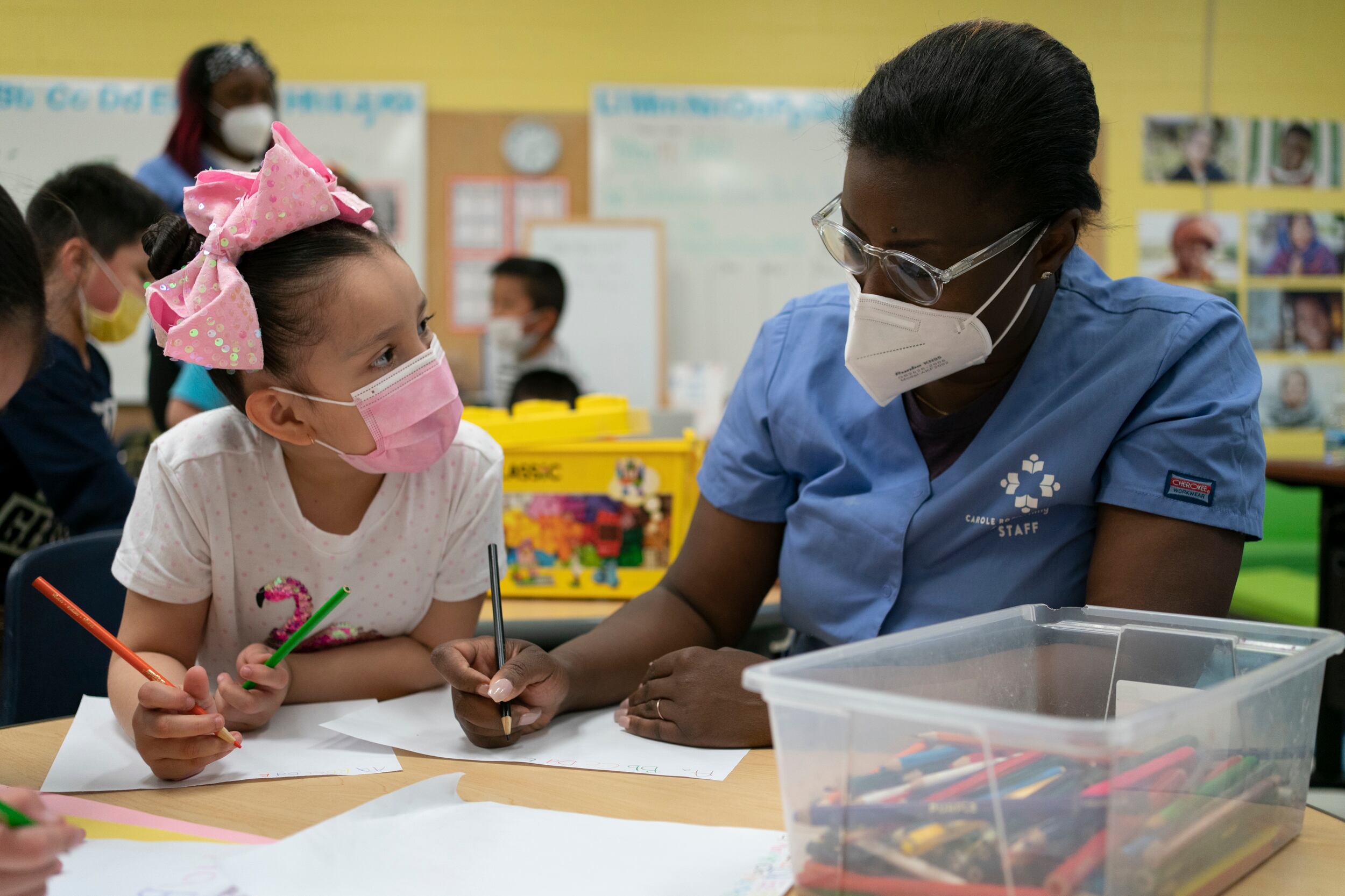Recruiting is an uphill climb. And K-12 public schools have had to face it head on in the pandemic era.
“For all of us that have done this work for any amount of time, we know it’s nice to say, let’s have some volunteers come in,” AmeriCorps CEO Michael D. Smith said at a White House event on recovery efforts in early July. “But it takes money. It takes positions. It takes someone to come in and recruit, manage and train them.”
Across the country, plans for new tutoring and mentoring programs have sometimes been scaled back, delayed, or scrapped as schools struggled to find the people they needed.
The Biden administration is trying to solve that problem with a new initiative called the National Partnership for Student Success. Announced in July, its goal is to get 250,000 new tutors, mentors, and coaches into schools over the next three years.
Can it get there? Organizations involved say yes. They say there is untapped potential among college students and the nation’s largest employers, among others. Millions of new funding as well as better ways of working together and sharing information will help, too.
“You have a lot of people who are flying blind that don’t need to fly blind,” said Kevin Huffman, CEO of Accelerate, a partner group focused on tutoring research. The student success partnership “can play a role in helping more districts access information more quickly.”
Still, familiar challenges loom.
“We recognize this as a challenging labor market,” said Robert Balfanz, a research professor and director of the Everyone Graduates Center at Johns Hopkins University, one of organizations leading the effort. “We’re not sugarcoating that.”
Funding recruitment
The initiative will spend $20 million in competitive grant funding from AmeriCorps to boost recruitment efforts over the next three years. Education-focused nonprofits, government agencies, and tribal- and faith-based organizations that apply will get priority, but it’s not guaranteed that all $20 million will go to education groups, AmeriCorps officials said. Applications close in September and funds are expected to reach those organizations in early 2023.
The initiative is looking for adults to fill a variety of roles, some paid and some unpaid. Eventually, a set of “quality standards” will outline exactly who counts toward the 250,000 goal, but they haven’t been released as of early August, officials said.
NPSS is encouraging schools and organizations to focus their outreach on university work-study programs and employees of major companies like Starbucks, Walmart, and Amazon, whose companies may incentivize community service time.
“It’s already an allowable use of work study to do it for community service in your community. But relatively few colleges and kids currently do that,” said Balfanz. “If we increase that to 10 to 15% of kids, it’s ambitious, but not impossible. That’s like 100,000 right there.”
Officials say other youth service organizations like the Boys & Girls Club, as well as AmeriCorps partners like City Year and Teach for America, will also play a part. City Year has not made plans to apply for additional grant funding nor set a goal to recruit more than its regular 3,000 success coaches yet, said Tasha Booker, the organization’s senior vice president for external engagement, though it could in the future.
Another piece of the initiative will be helping schools to have the resources and information they need to run programs efficiently.
The U.S. Department of Education will advise state education departments and school districts about how to use COVID relief funds and other federal dollars. The Everyone Graduates Center will connect schools with organizations who specialize in student support, serving as an “organizer and broker,” Balfanz said. And organizations like Accelerate will offer specific advice.
“If you’re a district, you may not be attuned to all of the different things that people are trying in different places,” Huffman said. “There’s a real opportunity to not force every district to relearn lessons that were learned by others who started before them.”
Challenges remain
It remains a tough recruiting environment, and schools have struggled to find people to fill paid roles over the past year in a competitive job market.
“There are programs in the AmeriCorps portfolio that are struggling a bit this year, as everybody is with labor market dynamics, although we are beginning to see a shift in that,” said AnnMaura Connolly, City Year’s chief officer for external engagement. “I’m hopeful that that ship will right itself at some point soon.”
“We are definitely looking to leverage the NPSS to focus attention on this as an opportunity,” she said.
Connolly said she expects some “episodic” or part-time volunteers to be counted among the 250,000. But research also shows that frequency is key to effective tutoring, and that students improve academically and behaviorally when there is an adult figure in their school life for multiple years.
Nationwide, other tutoring efforts that have tried to recruit college students have found it difficult to manage scheduling and transportation.
Still, Balfanz and representatives from organizations Chalkbeat spoke with felt confident their goal was achievable.
As the partnership measures its progress toward 250,000, Balfanz says the focus won’t be on precision, but general progress.
“This is not going to be Deloitte accounting,” he said. “Our real goal is to get good supports in schools to help kids recover and thrive in the pandemic.”
“If we get to 225,000 instead of 250,000, that will still be a rousing success. Because that’s 225,000 more than before,” Balfanz said.
Jessica Blake is a summer reporting intern for the Chalkbeat national desk. Contact her at jblake@chalkbeat.org or on Twitter at @JessicaEBlake.






